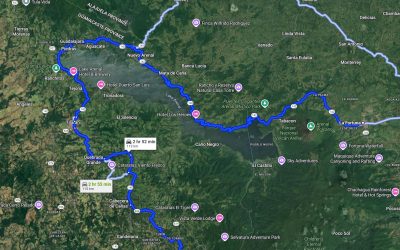The recent decrease in water levels in Lake Arenal, a critical source of hydropower in Costa Rica, has raised pressing questions about the country’s energy sustainability and environmental impact. Traditionally reliant on hydroelectric power, this situation necessitates an exploration of alternative energy sources and innovative technologies, such as Thermal Energy Storage (TES) systems, to maintain its green energy commitments and carbon footprint objectives.
Alternative Energy Sources: Addressing Hydropower Shortfalls
- Solar Energy: Costa Rica’s geographical positioning offers significant potential for solar power. The integration of solar energy into the national grid could help mitigate the dependency on hydroelectric power.
- Wind Energy: Already a part of Costa Rica’s renewable energy portfolio, wind energy could be further expanded. The country’s varied topography offers ample opportunities for wind farm installations.
- Geothermal Energy: Capitalizing on its volcanic terrain, Costa Rica could expand its geothermal energy production, providing a more stable and climate-independent energy source.
- Biomass and Biogas: Utilizing organic waste, these sources can supplement the national energy mix and are aligned with sustainable waste management practices.
TES Systems: Complementing Renewable Energy
The integration of Thermal Energy Storage systems could be a strategic response to the fluctuating nature of renewable energy sources:
– Storing Excess Energy: TES systems can store excess energy generated during periods of high renewable output, especially from solar power during sunny days, and release it during periods of high demand or low generation.
– Enhancing Grid Stability: TES can help in balancing the grid, reducing the reliance on hydropower and potentially minimizing the need for fossil fuel-based energy during low hydroelectric generation periods.
– Sustainable Energy Management: By providing a way to store and manage energy, TES systems can make the overall energy mix more sustainable and efficient.
Carbon Footprint Considerations
The shift to a diversified energy portfolio incorporating TES systems could help Costa Rica maintain its low carbon footprint. By maximizing the use of renewable energy and minimizing reliance on fossil fuels, TES systems could play a pivotal role in ensuring environmental sustainability. However, the environmental impact of TES system production and implementation also needs consideration.
Challenges and Opportunities
– Financial and Technical Aspects: The initial investment and technical integration of TES systems into the existing energy infrastructure could be challenging. This includes assessing the suitability of different TES technologies (like sensible heat, latent heat, or thermochemical storage) for Costa Rica’s specific energy needs.
– Policy Framework: Effective policy frameworks are necessary to support the adoption of TES systems, including incentives for research and development, and regulations facilitating integration into the existing grid.
Facing the challenge of reduced hydropower capacity, Costa Rica stands at a crossroads. The exploration of alternative renewable energy sources, coupled with the adoption of technologies such as Thermal Energy Storage, offers a pathway to not only overcome current energy challenges but also to strengthen its commitment to sustainable and environmentally responsible energy practices. The successful integration of these technologies and sources can ensure that Costa Rica continues to be a global exemplar in green energy production while maintaining a low carbon footprint.
Please send inquiries to info@thermalnrgharvesting.org
Visit our website thermalnrgharvesting.org
#howlermag #howlermagazine






